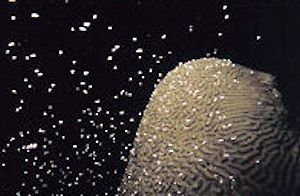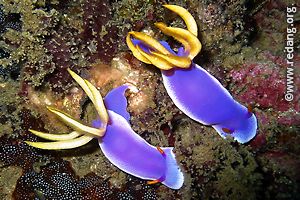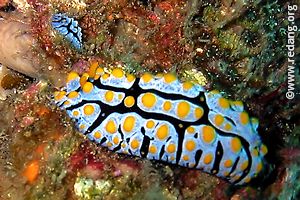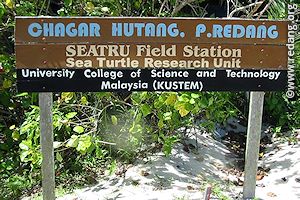Having just finished our PADI Rescue course just over 2 months ago, Joseph and I were heading to Redang again for a coral spawning seminar almost at the end of visiting season. This time we were accompanied by Josephs' cousin Law and his friend Ann Nee, who were there for leisure diving.

Joseph with his cousin and Ann Nee.
Coral spawning is an event that happens only on a few nights a year when many different species of corals simultaneously release millions of sperm and eggs into the sea. Those who have witnessed it describe it as a snowstorm or blizzard underwater. The seas around coral reefs turn into a nutritious soup that attract many hungry fishes and is sometimes visible as a coloured slick on the water's surface. This strategy is believed to maximize the chances of fertilization and the survival of fertilized eggs called planula by overwhelming predators such that even when all these have eaten their fill, there's still plenty of leftovers, forming a brightly coloured slick on the water surface that apparently is even visible from space.

Brain coral spawning, ©NOAA (Nat'l Oceanic & Atmospheric Administration).
Coral spawning was only discovered in 1981 on the Great Barrier Reef. Before scientists witnessed that first spawning event, the sex life of corals was a mystery. Even today, very little is known about the timing of coral spawning except in areas like the Great Barrier Reef, the Florida Keys and some parts of the Caribbean. Even then, the factors and cues that trigger spawning are not clearly understood, other than the fact that it has something to do with water temperature and tides. In Malaysia, the topic has not been actively researched nor documented. This seminar hoped to look at data to predict when coral spawning would take place at Redang and perhaps on a larger scale, on reefs throughout Peninsular Malaysia.
The seminar

Pair of Hypselodoris bullockii nudibranch.

Adult and juvenile phyllidia nudibranchs.

SEATRU Chagar Hutang.
Dr. Jamie Oliver, a senior scientist with the WorldFish Centre based in Penang, and who had a lot of experience with coral spawning in the Great Barrier Reef, was at the seminar to share his experiences with the rest of the participants from Malaysia and Singapore. Most of the participants were marine scientists and marine biology students from KUSTEM, the local university in KT.
Mr. Liew Hock Chark from the Institute of Oceanography at KUSTEM in Kuala Terengganu, who was the main organizer of this event and who also runs SEATRU on Redang, opened the seminar with a presentation introducing corals and coral reefs, factors affecting their survival, lifecycle and reproduction.
Over the next 2 days, we heard presentations from various participants. We went on dives to collect small amounts of coral sample for analysis, which were dissected under a microscope and examined for presence of eggs and sperm sacs. Laguna's dive centre was used as a temporary marine lab. This was probably the most interesting part for me as I had never seen a dissected coral polyp. To most people, hard corals are just like inanimate rocks, yet under the microscope, the polyp animal was plain to see.
Initially, we had planned some night dives to observe the spawning, but it became obvious after the samples were analyzed that this was not going to take place. It would have been a big bonus had we been able to witness the spectacle, but at least we went away with more data to be able to predict when spawning would actually take place, and hopefully come back next year to observe it.
Over the duration of the seminar, we did 3 dives at Chek Isa, Big Mount and Tanjung Tokong. The most memorable dive was at Big Mount. Joseph and I were as usual at the back of the group taking photographs. At one point, a beautiful adult leopard shark swam right between us in mid water. It happened so quickly I didn't have time to take a picture, so I just admired it until it disappeared from sight.
At this time of year, it also seemed there were more nudibranch around. It was interesting to encounter on 2 separate dives, a pair of nudibranch comprising a large adult and a tiny young version of the same species.
On the last day of the seminar, we visited SEATRU at Chagar Hutang where Mr. Liew gave us a quick tour of the site and explained the work of SEATRU volunteers. There were still a couple of turtle nests on the beach, their location marked only by wooden poles. Other nests were evident from the presence of egg shells left behind when the baby turtles hatched.

Coral spawning seminar participants. Seated from left are Mr.Liew, Dr.Oliver and Seng Lip.